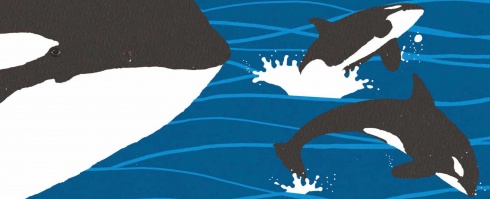
How To Use: I SEE THE SEA
Discussion prompts
Here are some ideas for things to talk about while sharing the book - you could ask a few different questions each time you read it.
You could encourage the children you’re reading with to take a deep breath as you ‘dive’ underwater and open the book to the first page. Remind them to breathe out before you start reading!
At the end of the book, you can find facts and information about the creatures you’ve discovered. You could refer to this as you go through the book, or save it for the end.
If you want to help children practise their research skills, you could show them how to do internet searches based on descriptive keywords, for example, you could identify the parrotfish by searching ‘Fish with a beak’ and looking at the image results. You can then check the fact pages for confirmation.
This might be the first time children encounter verbs like ‘illuminating’ and ‘scouring’ - can they guess what they mean?
Children can peep through the hole on each page - give them a few seconds to name or describe the creature on the next page, then find out if they were right.
Some creatures spend time in groups but others are happy to swim around alone.
The spot-fin porcupinefish spread shows the fish inflated and in its usual form. You could look online for a video of the fish puffing up to deter predators.
The final pages offer tips on how to help preserve our oceans and make greener choices.
Activities
Biomimicry
The squids in the book are described as torpedo-shaped. Look at a picture of a torpedo together and talk about how the shape helps it to cut through the water. Although the design may not have been inspired by streamlined squids, humans often look to nature for ideas when designing. We call it ‘biomimicry’. An example of this is when an engineer working on a Japanese bullet train realised that if the front of the train was a similar shape to a kingfisher, it would stop making a loud boom every time it left a tunnel!
For a fun STEM activity, you could ask children to choose a creature from the book and use them as inspiration for an invention or a redesign of something that already exists. Creatures gain unique features as a result of evolution, in other words, there’s usually a reason for them to look the way they do.
An example:
The bold pigments of the mandarin fish act as a warning to predators, so it makes sense to apply them to an invention that warns of danger, so you could copy their pattern to design signs reminding drivers to slow down near a school or a funky protective coat for someone to wear while working on a construction site.
Let’s Write!
You could base a creative writing exercise around mimicking Julia’s writing style. Look up some undersea creatures that don’t appear in the book, then try writing sentences about them that follow the pattern of ‘I SEE _________’

 Go to UK site
Go to UK site Go to AUS site
Go to AUS site


Email this page to a friend